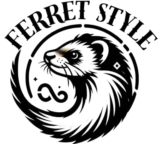The Jewish Piedmont Cultural Card is a unique access pass that invites visitors to explore the rich Jewish heritage of Italy’s Piedmont region. It offers entry to several historic sites, including synagogues, museums, and other locations that preserve the history and culture of Jewish communities in Piedmont. This card provides a convenient way to learn about Jewish life in the area, from the past to the present.
The history of Jewish life in Piedmont dates back to the Middle Ages. Over centuries, Jewish communities have woven their traditions, beliefs, and customs into the broader fabric of Piedmontese society. They faced various challenges, such as restrictions on their movement, periods of persecution, and cultural assimilation. Despite these challenges, Jewish communities in Piedmont preserved their customs, contributed to the local economy, and fostered a unique blend of Italian and Jewish traditions that make their culture distinctive. The Jewish Piedmont Cultural Card gives visitors a chance to engage with this profound history by providing access to sites that reveal the Jewish experience in Piedmont.
Key Sites You Can Visit with the Jewish Piedmont Cultural Card
The card opens doors to several important cultural and religious sites, each with a unique story and significance:
Synagogue of Turin: Built in the 19th century, this synagogue stands out for its Moorish Revival architectural style, blending Italian and Jewish design elements. It also houses a museum where visitors can see collections of Jewish art, religious artifacts, and documents that showcase the deep-rooted traditions of Jewish families in the region.
Jewish Museum of Casale Monferrato: Located in a 16th-century synagogue, this museum preserves and presents Jewish cultural artifacts, including religious objects, manuscripts, and ceremonial items. The museum offers insights into how Jewish communities lived, worshipped, and interacted within Piedmontese society.
Asti Synagogue: The Asti Synagogue is notable for its architectural style, reflecting Italian and Jewish influences. Guided tours reveal its artistic and historical details, giving visitors a glimpse into the life of the Jewish community in Asti through its architecture and interior decorations.
Jewish Cemetery of Moncalvo: A sacred space that provides a solemn look into the history of the Jewish community in Piedmont, this cemetery has tombstones with inscriptions in Hebrew and Italian, illustrating the community’s continuity and connection with the region.
Unique Architecture of Jewish Sites in Piedmont
The synagogues and Jewish buildings of Piedmont feature unique architectural styles that reflect a blend of Jewish and Italian elements. The design of each building is influenced by both religious symbolism and local traditions, creating spaces that are both spiritually and aesthetically significant. Baroque details, Italian frescoes, and decorative motifs combined with Jewish symbols provide insight into how Jewish communities embraced local styles while retaining their distinct cultural identity. These buildings are not only places of worship but also architectural landmarks that testify to the enduring presence of Jewish communities in Piedmont.
Discovering Jewish Art and Artifacts
Many of the sites included with the card house collections of Jewish art and artifacts. Museums display a variety of items, including ancient Torah scrolls, silver ceremonial objects, and historical documents. These artifacts offer a glimpse into the daily lives, religious practices, and artistic expressions of Jewish families in Piedmont. Each piece has its own story, helping to build a picture of the values, skills, and faith that have characterized Jewish life in the region for generations.
ALSO READ: Yenişaak: Turkey’s Tranquil Retreat of Heritage and Nature
Guided Tours for a Deeper Experience
With the Jewish Piedmont Cultural Card, visitors can access guided tours led by knowledgeable experts who share insights into the region’s Jewish heritage. These tours take visitors through the history, architecture, and religious practices of the sites, explaining the symbols and meaning behind each element. In addition to providing historical context, guides often share stories about individuals and families, adding a personal dimension that brings history to life.
Traditional Jewish Celebrations and Events
The Jewish Piedmont Cultural Card also grants access to cultural events, festivals, and religious celebrations. Jewish holidays like Purim, Hanukkah, and Sukkot are often celebrated at these heritage sites, and visitors can experience the lively traditions associated with these festivals. These events allow visitors to connect with Jewish customs in a way that goes beyond exhibits and architecture, offering a more immersive experience of Jewish life and spirituality.
Helping Preserve Jewish Heritage
Purchasing the Jewish Piedmont Cultural Card directly supports the preservation of these significant sites. Funds from the card are used to maintain, restore, and protect synagogues, cemeteries, and museums, ensuring that these historical places remain accessible for future generations. This support is vital for the long-term care of the region’s Jewish cultural landmarks, making the card a valuable investment in preserving cultural heritage.
Jewish Influence on Local Piedmontese Culture
The impact of Jewish communities on Piedmontese culture is visible in many ways, from culinary traditions to artisanal crafts. Jewish dishes have influenced local cuisine, and Jewish artisans contributed to the region’s craftsmanship, creating items that were cherished across communities. The card provides an opportunity to explore how Jewish and Italian cultures have intermingled over the centuries, creating a shared heritage that remains part of Piedmontese life today.
Tips for Making the Most of Your Jewish Piedmont Cultural Card
To fully enjoy what the Jewish Piedmont Cultural Card offers, visitors should plan their visits around each site’s opening hours, tour schedules, and events calendar. The card is available in different durations, such as one-day, three-day, and week-long passes, giving travelers the flexibility to choose the pass that best suits their itinerary. Additionally, scheduling time for the guided tours at each site can help visitors gain a richer understanding of the Jewish heritage preserved in Piedmont.
Exploring Jewish Life in Piedmont Today
The Jewish Piedmont Cultural Card provides a way to engage with both the past and the present. While many of the synagogues and museums focus on historical preservation, they also serve as community centers where local Jewish residents gather for religious services and cultural events. This connection to contemporary Jewish life offers visitors an opportunity to understand the continuity of Jewish traditions in Piedmont, which remains a vibrant part of the local community.
Educational Programs for Schools and Groups
The Jewish Piedmont Cultural Card is an excellent resource for educational groups. Many schools, universities, and cultural organizations use the card for field trips, helping students learn about Jewish history and culture in a hands-on way. Educational programs at these sites include lectures, workshops, and interactive activities that allow students to engage deeply with Jewish heritage in the region.
Conclusion
The Jewish Piedmont Cultural Card is more than just a pass to historical sites—it’s an invitation to experience the rich cultural heritage of Jewish communities in Piedmont. It provides access to synagogues, museums, festivals, and educational programs, allowing visitors to explore Jewish history, art, architecture, and traditions. By supporting the preservation of these sites, the card helps ensure that Jewish culture remains a visible and valued part of Piedmont’s landscape. Whether you’re interested in history, architecture, or cultural events, the Jewish Piedmont Cultural Card offers a meaningful and memorable journey through the Jewish heritage of this beautiful region in Italy.



